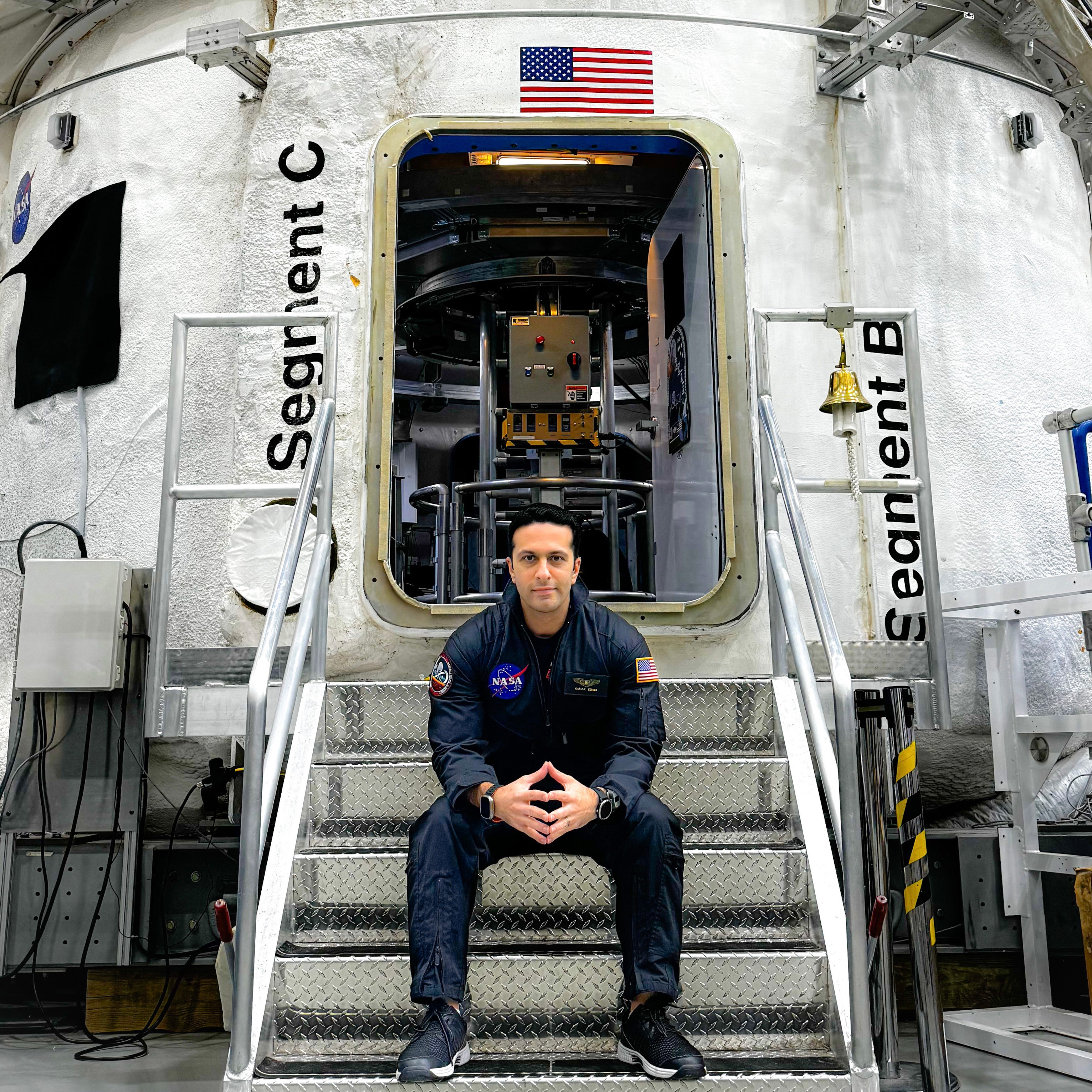
Cosmic Odyssey: Kamak Ebadi's Virtual Journey to the Red Planet
Santa Clara University (SCU) Alumnus, Kamak Ebadi, Ph.D. '20, embarked on his journey to work for NASA fueled by a powerful dream. Born during the 8-year-long Iran-Iraq war and raised in a country slowly recovering from its devastation, Kamak faced immense challenges. With Iran lacking diplomatic ties with the U.S. and financial obstacles making the idea of moving to the U.S. seem impossible, Kamak's dream of joining NASA appeared out of reach. However, undeterred by adversity, Kamak dared to dream big and set his sights on reaching for the stars.
To think that it was only five years ago that “Reaching for the Stars, Powered by a Dream” was featured in the Winter 2019 edition of Engineering News about Kamak’s journey. Back then, he was a Ph.D. candidate studying robotics. Kamak’s journey has truly come full circle: After years of hard work and overcoming challenges, he came to the U.S. on a student visa to pursue his passion. He obtained his Ph.D. in Electrical Engineering with a focus on robotics from SCU and received a postdoctoral fellowship with NASA’s Jet Propulsion Laboratory at Caltech. This led to Kamak landing his dream job at the NASA Jet Propulsion Laboratory where as a robotics technologist, he has contributed to a variety of projects, including spaceflight operations for NASA's Perseverance rover on Mars. Recently, he returned from a 45-day simulated journey to the red planet, Mars—an experience that only a very few people get to share in their lifetime.
After undergoing a rigorous year-long process of technical, physical, and psychological screenings and evaluations, Kamak was selected by NASA as an analog astronaut for a simulated round-trip journey to Mars. Following weeks of intensive training and preparation, Kamak and his three crewmates honed their skills, familiarized themselves with spacecraft systems, and engaged in 18 scientific and technological studies. During their training, they were acutely aware that each moment of preparation brought them closer to this remarkable simulated journey to Mars. However, Kamak knew that leaving home would be challenging, given the simulated communication delays and limited contact with the outside world, especially with his then 3-month-old daughter.
Life within the simulated spacecraft posed challenges for Kamak and his crewmates, including isolation in a confined and small space without access to the outside world, internet, natural daylight, and fresh food. They worked rigorous 16-hour days, performing spacecraft operations, maintenance, anomaly responses, and scientific studies, while also managing exercise and personal hygiene. They even experienced virtual spacewalks using NASA's high-fidelity VR headsets. Despite these constraints, strong camaraderie flourished among the astronauts, united by shared experiences and a collective purpose.
As time went on, Kamak observed transformations in both himself and his fellow crewmates. They grew increasingly resilient, adaptable, and adept in communication and teamwork, becoming better equipped to face the challenges of life in space. Ongoing brain and heart monitoring, combined with surveys and comprehensive cognitive evaluations, yielded important insights into the psychological and physiological impact of isolation and confinement. These insights will help deepen NASA's understanding of how to support astronauts during long-duration missions.
Throughout the journey, Kamak has remained unwavering in pursuit of his ultimate aspiration—to become an astronaut and explore the cosmos. He recognizes that the road ahead will be fraught with trials and tribulations, yet he embraces each challenge with fortitude and resilience. Reflecting on his journey—from nurturing dreams of the stars as a teenager in Iran to contributing to the operation of NASA's Perseverance rover mission on Mars—Kamak affirms that every sacrifice has been worthwhile. As he now prepares to apply for NASA's astronaut program, it's evident that each challenge he has faced serves as a stepping stone, propelling him closer to his goal of joining the elite ranks of astronauts.
Kamak’s advice to those aspiring to follow in his path echoes the sentiment of Theodore Roosevelt’s, ‘Dare mighty things, “Dream audaciously, plan meticulously, and be prepared to sacrifice along the journey. But above all, enjoy the journey and not just the destination.”